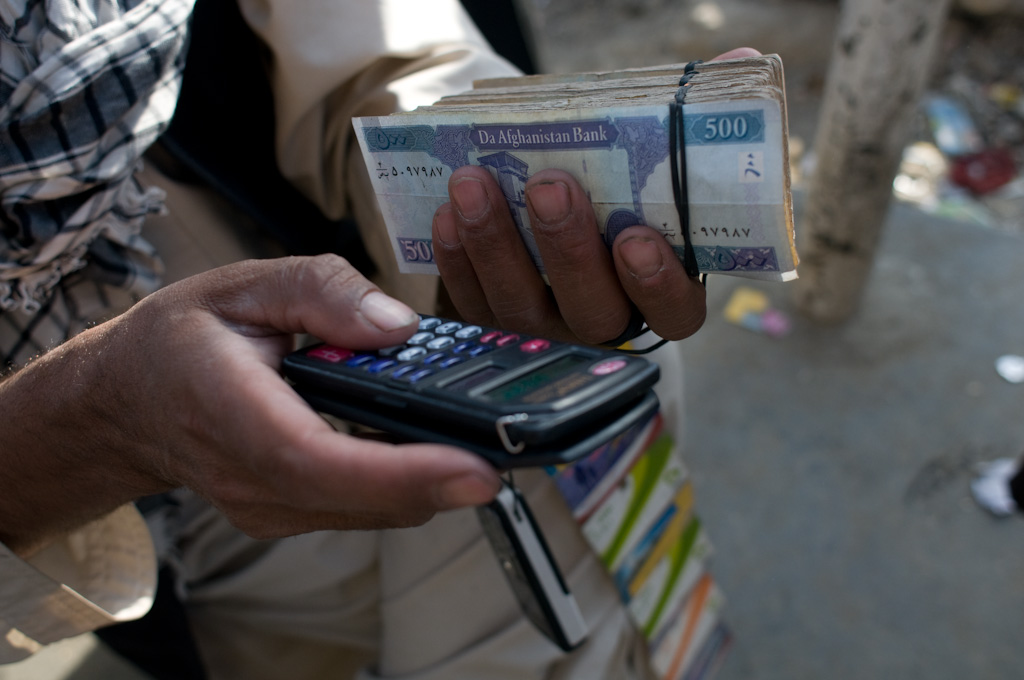Afghanistan is a country with extremely low levels of access to banking infrastructure; limited trust in formal institution; and high levels of illiteracy. On the flip-side it has a growing mobile phone eco-system that inclues a growing legion of micro-entrepreneurs. In 2008 Roshan partnered with Vodafone to bring M-Paisa mobile money services to Afghanistan.
What happens to existing money practices when a mobile operator introduces mobile banking services into this environment? How is it used? What innovations does it enable? And ultimately how does it affect the day to day quality of life for those at the base of the pyramid? How do mobile money services work alongside existing formal and informal money practices? What lessons that can be drawn for the design of mobile money services around the world?
To probe these questions I’ve set up a research study with generous support from the Institute for Money, Technology and Financial Inclusion and frog design. This summer I’ll be working alongside Panthea Lee and a nimble local team to explore these topics – the outline of the research can be downloaded CGAP Microfinance Blog, the CGAP Technology Blog and if you have the bandwidth check-out Designing Services for Financial Inclusion.
Getting hold of up-to-date, reliable statistics for Afghanistan is kinda challenging, the sources for the statistics in the deck are: 97% without banking infrastructure – though if this is based on # of accounts then the figure will be even lower – many people may operator multiple accounts, many accounts can be inactive; mobile density – though its not clear whether this includes multiple device ownership – if it does divide by 2 or 3 the number of phones operated by those that can afford them; and adult literacy – prefer to use UN Data for literacy rates but they don’t have up-to-date gender breakdown.

3 Trackbacks
[…] This post was mentioned on Twitter by thatreeder, Future Perfect. Future Perfect said: New on FP: Mobile Money Afghanistan: Afghanistan is a country with extremely low levels of access to banking infr… http://bit.ly/bZi3VE […]
[…] This post was mentioned on Twitter by Bill, iPayStation. iPayStation said: RT @billcpu: Mobile Money Afghanistan http://bit.ly/djJlGr Roshan, Vodafone, M-Paisa […]
[…] This post was mentioned on Twitter by Jan Chipchase, frog design, ianfitzpatrick, Sam Martin, noopur and others. noopur said: RT @janchip: Sometimes you just have to follow the money: what & why I'm researching in Afghanistan: http://bit.ly/fp_fate […]